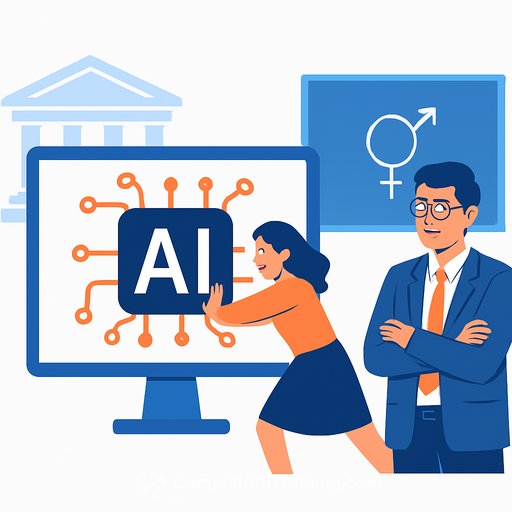Curriculum and Assessment in the AI Age: What Education Leaders Asked For
At DeepLearn Human Science on 2 September 2025, education leaders called for a reset of what we teach and how we assess. The message was clear: if AI can do it, we need to shift focus to the parts of learning that require human judgment, originality, and ethics.
Why the Curriculum Must Shift
- Recall and routine outputs are now baseline. Students need to frame problems, vet sources, and make decisions under constraints.
- Core literacies expand to AI literacy, data literacy, and media verification-embedded across subjects, not siloed in a single course.
- Equity and access are non-negotiable. Policies must ensure every learner has guided access, clear norms, and support.
What to Teach Next
- Problem framing and research design: ask better questions, set criteria, and define constraints.
- Prompting with intent: structure inputs, test variations, and critique outputs with evidence.
- Model limits and bias: know when AI is unsuitable, how errors show up, and how to verify facts.
- Data literacy: sources, sampling, privacy, consent, and basic statistics applied to real tasks.
- Writing and math that show reasoning: annotated drafts, worked solutions, and reflective notes.
- Ethics and attribution: citation for AI use, copyrighted material, and acceptable assistance.
- Computational thinking across disciplines: automation logic, workflows, and simple scripting where helpful.
Assessment That Fits the AI Context
- Allow AI where it mirrors workplace practice; require citation and a short reflection on what was prompted and why.
- Use open-resource exams with time limits and question variants that require interpretation, not memorization.
- Add oral defenses, live problem-solving, and whiteboard checks to confirm individual understanding.
- Prioritize performance tasks and portfolios with version history, prompts used, drafts, and feedback cycles.
- Assess process and decision quality with clear rubrics: problem definition, method, evidence, and impact.
Academic Integrity Without Fear
- Do not rely on AI-detectors for policing; they are inconsistent and create false positives.
- Design assessments that are personal, local, iterative, and verbally verifiable.
- Use AI-use statements: what tools were used, for which steps, and how outputs were verified.
Policy and Safeguards
- Publish a simple matrix: AI-allowed, AI-discouraged, and AI-prohibited contexts-with examples.
- Protect privacy: disable data retention where possible, avoid uploading student identifiers, and review vendor terms.
- Guarantee access: devices, connectivity, and assisted alternatives for students with special requirements.
- Monitor bias and misinformation: set protocols for verification and red-teaming sensitive prompts.
For broad guidance, see UNESCO's recommendations on generative AI in education here and OECD work on AI and education here.
90-Day Plan
- Form a cross-functional AI steering group (teachers, students, IT, safeguarding, legal).
- Audit assessments; label where AI use changes task validity.
- Publish a 1-page AI use guide with citation rules and examples.
- Pilot two redesigns: an open-resource exam and a project with an oral defense.
- Create a shared rubric for reasoning, process evidence, and ethical use.
- Run 4 hours of staff training on AI basics, prompting, verification, and assessment redesign.
- Adopt a student AI-use declaration template and short reflection prompts.
- Choose privacy-aware tools; turn off data logging and model training where possible.
6-12 Month Plan
- Thread AI literacy across the curriculum map; specify skills by year and subject.
- Launch a portfolio system with version tracking and artifact reflections.
- Replace detector-based integrity policies with assessment design principles.
- Fund access and support for disadvantaged learners; measure uptake and outcomes.
- Introduce capstones tied to community briefs; require oral defenses and public artifacts.
- Update procurement: privacy, security, bias testing, and opt-out controls are standard.
- Build teacher communities of practice with monthly share-outs and peer observation.
- Evaluate pilots with clear metrics: achievement, time saved, integrity incidents, and student agency.
Practical Classroom Moves You Can Start This Week
- Switch one homework from "write an essay" to "compare your essay draft with an AI draft; annotate differences, cite sources, and submit both."
- Add a 5-minute oral check to one major assignment.
- Require a prompt log and a verification checklist for any AI-assisted task.
- Convert a recall quiz into an open-resource, short-time analysis prompt.
Tools, Training, and Support
If your staff needs structured upskilling, explore role-based AI course options here. Focus PD on prompting, verification, ethics, and assessment redesign.
Bottom Line
The goal is simple: teach students to think with AI, not let AI think for them. Start small, document what works, and scale the practices that improve reasoning, originality, and integrity.
Your membership also unlocks:






